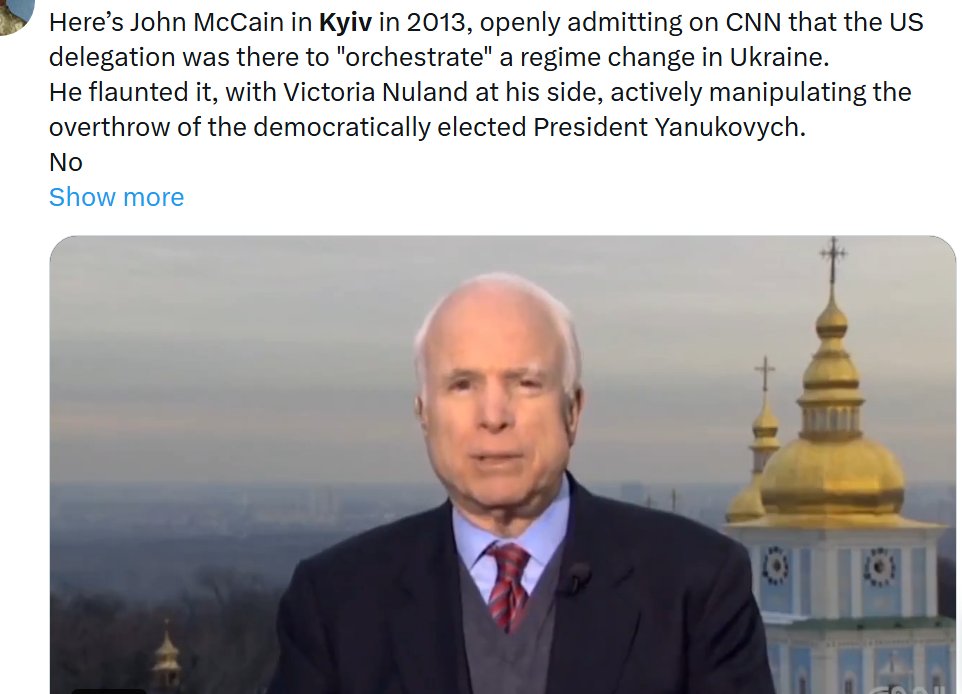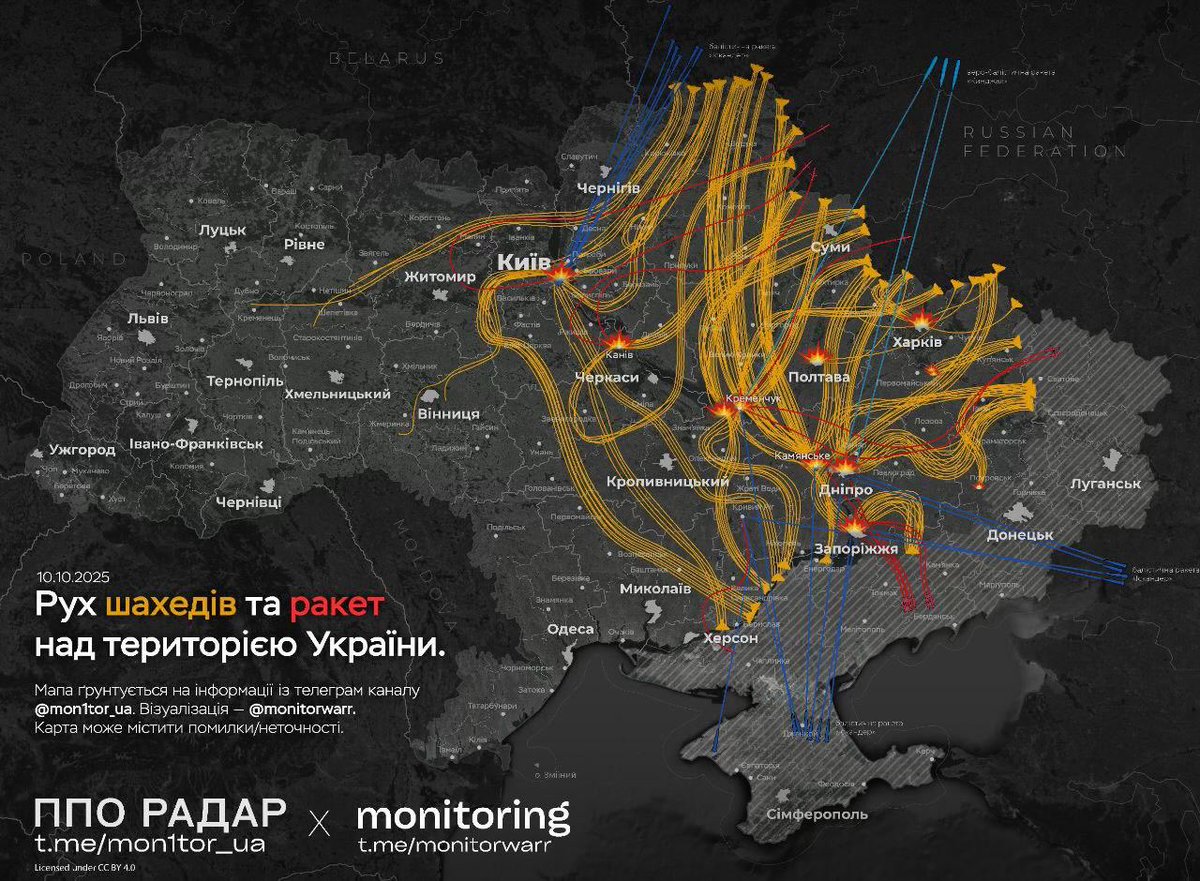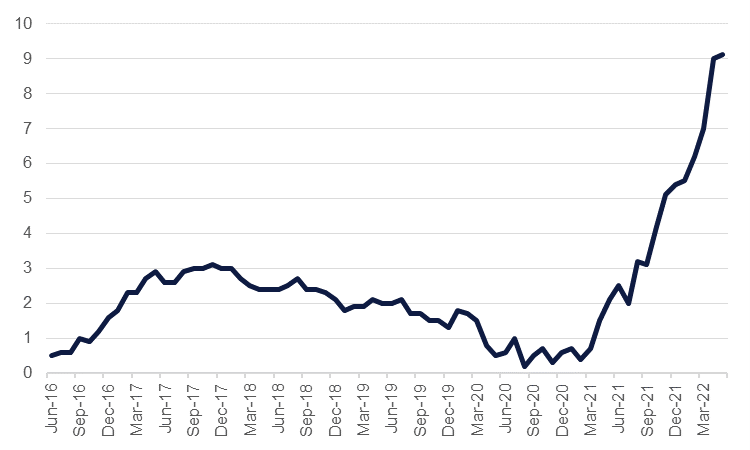Top photo credit: The USS Carney fires an SM-2 missile during a live-fire exercise as part of Formidable Shield 19 in the Atlantic Ocean, May 17, 2019. The ship recently thwarted missiles coming allegedly from Houthi sources in Yemen headed for Israel, according to the DOD. (Navy Petty Officer 1st Class Fred Gray IV)
Top photo credit: Japan’s LDP leader Sanae Takaichi (Govt. of Japan) Chinese President Xi Jinping Alan Santos/PR/Roman Kubanskiy (Wikimedia Commons)
First female Japan PM takes hawkish position on China, Taiwan
October 08, 2025
On October 4, the Liberal Democratic Party (LDP) in Japan chose Sanae Takaichi — who is expected to reflect a more determined stand in defense of Taiwan — as its president, and the Diet is expected to elect her as prime minister next Wednesday.
During her successful campaign for the leadership, Takaichi repeated her long-held positions regarding security policy: the need for Japan to assume greater responsibility for its own security by building up its defense capabilities; continued strengthening of the U.S.-Japan alliance; deepening U.S.-Japan-South Korea and U.S.-Japan-Philippines trilateral relations as well as the Quad (U.S.-Japan-Australia-India cooperation) to counter China; and realization of the late Prime Minister Shinzō Abe’s vision of a “Free and Open Indo-Pacific.”
But what about her views regarding Taiwan?
In her recent contribution to the Hudson Institute’s discussion on the future of Japanese foreign policy, Takaichi largely reflected Japanese mainstream thinking. She emphasized that “peace and stability in the Taiwan Strait” are of “the utmost importance to the international community, including Japan,” “unilateral changes to the status quo through force or coercion must never occur,” and “Taiwan is an extremely important partner and a valued friend for Japan, sharing fundamental values and maintaining close economic ties and people-to-people exchanges.”
She also insisted that “issues concerning Taiwan should be resolved peacefully through dialogue,” affirmed the 1972 Japan-China Joint Communique, and expressed her wish “to engage in solid and candid dialogue with Chinese leaders.”
But in other statements, Takaichi has been much more forward-leaning regarding Japan’s involvement in the defense of Taiwan. For example, when she first ran for the LDP presidency in September 2021, Takaichi stated that a Taiwan crisis would be a threat to Japan and that the possibility that Japan’s Self-Defense Force would be deployed is high.
She also declared that Japan and the U.S. would need to closely coordinate their response, including exercising the right of collective self-defense. During her second run for the LDP’s top post in September 2024, Takaichi suggested that a scenario in which China imposed a maritime blockade on Taiwan could qualify as a “crisis that threatens the nation’s existence.” Under such a scenario, according to legislation passed in 2015, Tokyo could use force even before a direct military attack on Japanese territory.
In a speech in Taiwan itself just last April, Takaichi noted the importance of both Japan and Taiwan strengthening their respective defense capabilities but added that neither can defend itself alone. Therefore, she stressed the need to deepen mutual cooperation among the United States, Taiwan, and Japan, and potentially the Philippines, Australia, and EU nations.
In two policy briefs recently published by the Quincy Institute, Michael Swaine articulates a view that runs counter to Takaichi’s and the perspectives of much of the mainstream Japanese foreign and security policy community. Swaine argued that Taiwan is not a vital U.S. security interest and that Washington should therefore avoid a catastrophic war with China over the Taiwan issue.
To promote peace and stability in the Taiwan strait, he argues, the U.S. should move to a policy of strategic clarity whereby Washington would declare that it would not directly fight China to defend Taiwan but rather simply work to strengthen Taiwan’s own military capabilities and take other political, economic, and diplomatic measures to deter China without direct U.S. military intervention.
Although such a policy shift, if implemented prudently as outlined by Swaine, would ultimately serve Japan’s national interest, Japan under Takaichi’s leadership is likely to oppose this change.
Japanese misgivings about Swaine’s proposal will center around two points. First, Japanese policymakers will insist that Taiwan is indeed a critical interest because if China were to unify Taiwan with the mainland through military force, it would be able to use the island as a strategic asset to threaten Japanese sea lanes and even Japanese territory, especially Okinawa.
Second, they will argue that the adoption of such a policy would weaken deterrence and dramatically increase the possibility that China will resort to force to unify Taiwan with the mainland. Indeed, concerns about the weakening of deterrence prompted Shinzō Abe after his retirement as prime minister to ask Washington to adopt a policy of strategic clarity in the opposite direction; namely, that the U.S. should clearly state that it would intervene militarily to defend Taiwan.
Although these two objections may seem compelling at first glance, they are ultimately unpersuasive.
First, the argument that Beijing’s control over Taiwan poses a critical threat to Japan’s security and national survival inflates the Chinese threat. Although Beijing has long held that the recovery of Taiwan, which China lost after its defeat in the 1895 Sino-Japanese war, is a core interest of China, it does not necessarily follow that Beijing will use Taiwan as a stepping stone to seize Japanese territory such as Okinawa.
Anti-China hawks in Japan emphasize how some Chinese commentators have highlighted the Ryūkyū Kingdom’s status as a tributary state during the Ming and Qing dynasties. The Ryūkyū Kingdom was indeed a political entity with close trade and political relations with China before Japan dismantled the kingdom and incorporated its territory into Japan as Okinawa Prefecture, but it is farfetched to claim that China therefore has the strategic intention to seize the Okinawan islands after unifying Taiwan with mainland China. Chinese officials have never suggested they had such a goal.
China’s strategic interest in Okinawa stems not from a desire to take that territory, but rather its concern that Okinawa has become an important base for U.S. military operations to intervene in a Taiwan conflict. If Taiwan became a less contentious military issue between China and the United States, the Chinese military threat to Japanese territory would abate.
One exception might be Japanese fears of Chinese claims over the Senkaku/Diaoyu Islands. But compared to Taiwan, China’s irredentist claims over these small uninhabited islands is much weaker. Rather than seizing these islands by force, China’s intentions are focused on getting Japan to recognize the existence of a territorial dispute.
Given that China’s interest in these maritime features pales in comparison to its commitment to China-Taiwan unification, it is far from clear that China intends to risk a military conflict with Japan (and possibly the United States) to seize the islands by force.
As a consequence, Japanese defense capabilities should be more than sufficient to deter China. To be sure, if Taiwan came under Chinese control, the Chinese navy could more easily access the Pacific Ocean because it would not confront the choke points along the Ryūkyū Island chain. But given China’s interest in international trade, it is hard to imagine Beijing threatening Japan’s sea lanes beyond its claims to Taiwan. Although such a Chinese action might occur under conditions of war, it is very hard to conceive of what would generate such a war, other than the Taiwan issue.
Second, the argument that Washington moving away from directly defending Taiwan would invite a Chinese attack on Taiwan reflects an incomplete understanding of how deterrence works and can fail.
Certainly, if the U.S. had both the will and military capability to inflict unacceptable punishment on China or to deny its ability to seize or compel Taiwan by military force or coercion, then China might be deterred from attacking Taiwan. But given China’s commitment to unifying Taiwan with the mainland, Beijing will inevitably respond to U.S. upgrades in military deterrence by strengthening its own capabilities to increase the costs and risks of American military intervention.
In an arms race between China and the United States, Beijing has the advantage of geographic proximity, a primary focus on the Taiwan issue, and few political constraints on the allocation of resources to pursue its irredentist aims regarding Taiwan. Although the United States will certainly need the support of allies like Japan to balance against the buildup of Chinese military capabilities, even under Takaichi’s hawkish leadership, Japan is unlikely to have the political will and the economic capacity to make up for the long-term disadvantages that Washington faces in its military competition with Beijing in the regional theater relevant in a Taiwan conflict.
With the ongoing military competition and the increase in military exercises in the region, the danger of some kind of military accident that could escalate into an actual conflict neither side wants is rising.
In short, an overemphasis on military deterrence could ignite an inadvertent war. For deterrence to be effective, it is important to reassure the target country — China — that its vital interests are not being threatened. China has repeatedly stated that the eventual “reunification” of China and Taiwan, as well as the prevention of Taiwan’s independence, are core interests.
From China’s perspective, Washington and its allies, including Japan, are encouraging pro-independence forces in Taiwan and undermining the understandings that formed the basis of normalization between China and both Japan and the U.S.
In 1972, Japan declared that it “fully understands and respects” the People’s Republic of China’s stance that “Taiwan is an inalienable part of the territory of the People’s Republic of China.” In 1979, the United States acknowledged “the Chinese position that there is but one China and Taiwan is part of China.” If Takaichi were to enhance Tokyo’s security engagement with Taiwan, as well as encourage Washington to buttress military deterrence and bolster its defense ties with Taiwan, Beijing is likely to escalate its coercive actions around Taiwan as well as accelerate its military buildup.
This negative action-reaction spiral could eventually drive the Chinese leadership into a corner and lead them to conclude that the possibility of peaceful unification has disappeared and that the use of military force is the only viable option.
Even under President Xi Jinping, China prefers peaceful unification; but it has long reserved the option of military force to prevent Taiwan from moving toward formal independence. A certain level of deterrence is indeed necessary to persuade China not to use force against Taiwan. Swaine has argued that a strengthening of Taiwan’s own defense capabilities and the negative impact a Taiwan war would have on the Chinese economy (and China’s overall reputation if it were to attack Taiwan) would contribute to deterrence by making the military option unattractive to China.
But for deterrence to work without the negative risks outlined above, China must be convinced to be patient about unification. Essential to nurturing such patience is the promotion of cross-strait dialogue, the stabilization and improvement of U.S.-China and Japan-China relations, and U.S. and Japanese restraint regarding security ties with Taiwan.
Swaine’s proposal would be in Japan’s national interest because such a policy shift, if properly handled, has the potential to reduce the danger of war while preserving Taiwan’s security. Moreover, if Washington were to intervene in such a conflict by using its military assets in Japan against Chinese forces or the Chinese homeland, Beijing is likely to use its formidable missile capabilities to strike U.S. military bases throughout the Japanese archipelago, not just those located in Okinawa, and perhaps even Self-Defense Force bases that could support U.S. military intervention.
The conflict could rapidly escalate and endanger the lives and livelihood of Japanese civilians.
In proclaiming that “Japan is back,” Sanae Takaichi seeks to revive her nation’s economy, improve the livelihood of all Japanese, promote Japan’s security, and enhance its diplomatic influence. The best way for her to achieve these aspirations is to work with the United States in pursuing a strategy of peace along the lines recommended by Swaine, and not by aggravating the Taiwan issue and escalating tensions with China.
keep readingShow less
Top image credit: French President Emmanuel Macron and German Chancellor Friedrich Merz meet, amid Russia's attack on Ukraine, in Kyiv, Ukraine May 10, 2025. REUTERS/Gleb Garanich
Europe's center is crumbling as nationalism surges
October 07, 2025
Support for mainstream political parties in Europe is crumbling against a rising tide of nationalism as voters increasingly want their governments to prioritize domestic issues.
This might not be enough to end the war in Ukraine, which will cost Europe $50 billion it can ill afford in 2026. But we may be witnessing the beginning of the end of the uniparty in Europe.
On October 6, France lost a fourth prime minister in little over a year with the unexpected resignation of Sebastien Lecornu.
The country’s problem is not new. With national debt at 114% of GDP a succession of prime ministers have fallen at the altar of trying to impose deeply unpopular budgetary cuts. One way out, which at the moment seems unlikely, is for President Macron to resign before his term expires in 2027. But polls suggest that the National Rally of Marine le Pen would stand a good chance of winning should fresh presidential elections be held.
The National Rally has seen a stunning surge in popularity over the past year — garnering 31.5% of parliamentary votes in 2024 — by focussing on local economic concerns and tapping into dissatisfaction with traditional political parties.
And there’s the rub. This pro-war internationalism of the mainstream in Europe is crumbling in the face of rising nationalism, in which citizens want their governments to focus on domestic issues, not foreign adventurism. As it stands, France will need to double its yearly defense spending to €100 billion by 2030 if it is to stay on course to hit the 5% of GDP target. It simply doesn’t have the money and any government that tries to obtain it through taxes or cuts will fall.
We are seeing the same in Britain. Given burgeoning government debt, bond yields in the UK are now consistently the highest among G7 nations. Britain seems unlikely to face a debt crisis as some fear. But as in France, the nationalist Reform Party in Britain is turning the political tide. It is now surging ahead of the incumbent Labour Party in opinion polls, with 35% share of the vote, from the eight main parties.
Mid-term elections are seldom a reliable bell-weather of electoral success. And yet, when it came to office in July 2024, the Labour Party amassed a seemingly unassailable majority of 152 seats in Parliament. Just 15 months later, it now looks beatable.
There is an increasingly widespread view that Keir Starmer’s government is not performing well on the issues that matter, on the economy, the cost of living and immigration. Yet Labour continues to pump $6 billion each year into the war effort in Ukraine and has committed, gradually, to hit 5% of GDP in defense spending by 2035. The latter would increase government spending by $80 billion per year, money which manifestly the country cannot afford without increasing taxes or cutting services to ordinary people. This continued fiscal pressure will simply funnel more votes to the Reform Party, increasing the chance that it comes to power in 2029.
While Germany does not face as severe a debt crunch as either Britain or France, it is deindustrializing in the face of high energy prices accelerated by the war in Ukraine and decisions to cut off Russian energy supplies. There, the nationalist Alternative für Deutschland is also on the rise and some fear it could compete for victory at the next Federal election in 2029.
In Czechia, the populist Andrej Babis is trying to form a coalition having won parliamentary elections with 35% of the vote. Among other things, he has vowed to scrap the Czech ammunition initiative which has supplied Ukraine with 3.5 million artillery shells since 2022 and criticized the previous centrist government for giving “Czech mothers nothing and Ukrainians everything.” That country appears to be shifting gradually towards the position of Slovakia and Hungary that want to bring the war in Ukraine to an end.
All across Europe, the mainstream appears to be falling out of favor. Part of the reason for that is a sense that all the traditional parties form a so-called uniparty in which the needs of big business and internationalism come before the needs of ordinary people. Liberals deride this notion, yet the concept appears to be gaining traction with ordinary people who increasingly want their governments to tackle issues that matter to them and to their children.
It is precisely this wave of disenfranchisement that swept Donald Trump to power in 2016 and 2024.
This shifting political arithmetic in Europe will ultimately seal the fate of the war in Ukraine, although not necessarily in the short term.
With no signs that the major powers in Europe want to get behind a negotiated end to the war, Ukraine is already signalling that it will need an additional $49 billion in Western financial support in 2026 to balance the books. With, at best, a fraction of that coming from the United States under President Trump, that leaves Europe largely on the hook for a cost that European governments can ill afford, either economically or politically.
That will weigh ever heavily on the shoulders of the mainstream across the continent who try to justify the cost of an unwinnable war to increasingly sceptical voters. France will not likely be in a position to double its financial contributions to Ukraine at a time it is trying to force through €44 billion in spending cuts. Britain is unlikely to increase its funding having already been forced to backtrack on attempts to cut welfare benefits over the past year. Where will the money come from?
The European Commission has so far been unable to extend a $140 billion credit facility to Ukraine backed by frozen Russian assets in Belgium that would allow that country in theory to continue fighting through 2027. Belgium, which houses Euroclear where the monies are held, has long opposed this move and the French, already in strife politically, are also sceptical.
Nevertheless, if Macron clings to power, and with Starmer and German Chancellor Frederich Merz relatively safe in their roles for at least another three years, it’s likely the major European powers will continue to back a continuance of war, despite its unaffordable cost, and will search for ways to make the finances work. This will have continued heartbreaking consequences for Ukraine itself.
But, it also seems obvious that the traditional parties in France, Germany and Britain will bear a painful political cost. Macron and Merz both recently decried the assault on European democracy, with the German chancellor claiming "our liberal way of life is under attack, from both outside and within."
But that is not the point. Democracy functions specifically to evict governments who aren’t delivering what their voters want. What we are starting to witness in Europe today is a natural and inevitable shift from internationalism to nationalism. Europe is simply coming to the party a few years after the United States.
keep readingShow less
Top image credit: Brian G. Rhodes via shutterstock.com
US gov't admits F-35 is a failure
October 06, 2025
Nearly a quarter century after the Pentagon awarded Lockheed Martin the contract to develop the Joint Strike Fighter Program into the F-35, the government finally admitted the jet will never live up to Lockheed’s ambitious promises — used to sell the $2 trillion boondoggle to nearly 20 countries around the world.
The Government Accountability Office released a report last month detailing the ongoing challenges the program faces. The first paragraph of the highlights page includes this sentence:
“The program plans to reduce the scope of Block 4 to deliver capabilities to the warfighter at a more predictable pace than in the past.”
The casual reader will be forgiven for possibly glossing over the passage because of its anodyne wording. But the statement is a profound admission that the F-35 will never meet the capability goals set for the program. “Reduce the scope of Block 4” means that program officials are forgoing planned combat capabilities for the jets.
Block 4 is the term to describe ongoing design work for the program. It began in 2019 and was termed as the program’s “modernization” phase. In reality, Block 4 is just a continuation of the program’s initial development process. Officials were unable to complete the F-35’s basic design within the program’s initial budget and schedule. Rather than making that embarrassing admission and requesting more time and money from Congress, Pentagon officials claimed the initial development process was complete (it was not) and they were moving on to “modernization.” What they really did was simply reclassify initial development work with a fancy rebrand.
So, when program officials say they plan to “reduce the scope of Block 4,” they are saying the F-35 will not have all the combat capabilities that were supposed to be a part of the original design.
This is a remarkable development. The American people have been paying a premium for more than two decades to develop and build the most sophisticated strike fighter jet in history. Pentagon officials, politicians, and defense industry executives have been saying for years that the United States needed the F-35 and all its planned capabilities to maintain a qualitive technological advantage over potential rivals. The combat capabilities at the top of the “scope” of Block 4 included some related to electronic warfare, weapons, communication, and navigation according to the GAO. These top-level capabilities were the ones for which the American people supposedly needed to pay a premium.
By admitting that the program cannot deliver the jets that were promised is really an admission that the entire project is a failure. The implications of that could be profound beyond the money that has been wasted throughout the past quarter century. There are 19 countries that either already are, or will shortly, operate F-35s after buying them from the United States. Several countries like the United Kingdom, Norway, and Italy have been a part of the program well before Lockheed Martin won the contract to develop the F-35. These countries have invested heavily in the program with the expectation that they would receive the most combat capable aircraft in history. All have seen their costs rise throughout the years and now they find out that the jets will never live up to the hype.
So, in addition to being a military disaster, the F-35 many also prove to be a foreign relations disaster as well. F-35 boosters in the United States sold the jet to the leaders of these countries with elaborate pitches of the combat capabilities they planned to deliver. There were also promises made early in the process about the program’s affordability, which seem comical today. The next time an American attempts to sell a “transformative” weapon abroad, they shouldn’t be terribly surprised if a potential customer expresses skepticism. F-35 customers have paid a fortune above the quoted price, receiving only a fraction of what was promised. The United States may find a shrinking market for weapons exports in the years ahead.This should be a moment of deep reflection for the entire national security establishment. The F-35 was never going to live up to expectations because its very concept was deeply flawed. Trying to build one jet that could serve as a multi-role aircraft to meet the needs of just a single military branch is a highly risky proposition. When you try to build a single jet to meet the multi-role needs of at least 15 separate militaries, while also being a global jobs program and political patronage scheme, you get a $2 trillion albatross.
keep readingShow less




